Do you have a question about the Samsung LE32M73BD and is the answer not in the manual?
Details about image retention (screen burn-in) and how to avoid permanent damage to the TV screen.
Details on TV components and instructions for installing the stand or wall mount kit.
Covers changing sound standard, adjusting settings, and using TruSurround XT.
Instructions for automatically and manually storing channels, and managing them.
Guides on using LNA, changing picture standard, and adjusting custom picture settings.
Using the WISELINK function for photos and music files.
Navigating and managing photo and music files via WISELINK.
Information on using the Teletext decoder and displaying information.
Setting up PC connection, display modes, and software.
Using the Kensington lock and general troubleshooting advice.
Detailed explanation of the TV's physical control buttons and indicators.
Instructions for connecting aerial, cable, and HDMI/DVI devices.
Guides for connecting audio systems, computers, and component devices.
Information on service ports, Kensington lock, and CI card interface.
Overview of remote control buttons and their functions.
Step-by-step guide for installing batteries in the remote control.
Instructions for powering the TV on, off, and placing it in standby mode.
Guide for the initial automatic setup process when powering on the TV.
Procedures for storing TV channels automatically or manually.
How to enable and use the child lock feature to prevent unauthorized viewing.
Instructions for reordering and managing stored channels.
Procedure for renaming channels for easier identification.
Guide to manually adjusting reception for a specific channel.
How to use the Low Noise Amplifier for weak signal areas.
Selecting optimal picture standards for different viewing environments.
Detailed steps to adjust contrast, brightness, sharpness, and color.
Selecting preferred colour tones like Cool, Warm, or Normal.
Fine-tuning individual color components (R, G, B) for custom picture.
Restoring picture settings to factory default values.
Selecting appropriate aspect ratios like Auto Wide, 16:9, and Zoom.
Adjusting display picture size to 4:3 for specific input signals.
Reducing static and ghosting in weak broadcast signals.
Using Digital Natural Image engine to enhance image quality.
Selecting colour matrix for natural colour experience.
Enabling 100Hz for smoother motion and clearer text.
Using the STILL button to freeze or unfreeze a picture.
Selecting sound effects modes like Standard, Music, Movie, or Custom.
Customizing sound preferences using the equalizer.
Enabling SRS TruSurround XT for virtual surround sound.
Automatically adjusting volume based on signal conditions.
Canceling the internal amplifier to hear sound through external speakers.
Selecting the sound source for the sub picture during PIP.
Restoring sound settings to factory default values.
Instructions for connecting headphones for private listening.
Setting the sound mode by pressing the DUAL button.
Setting the TV's clock for time display and automatic timers.
Setting a timer for the TV to automatically switch to standby.
Programming the TV to switch on or off at specific times.
Selecting the language for menus and indications.
Optimizing TV settings for a better gaming experience.
Configuring blue screen display and power-on/off melody.
Adjusting brightness to reduce power consumption and eye strain.
Controlling the Blue LED indicator for power saving and eye fatigue.
Choosing among external sources connected to the TV.
Customizing names for input jacks for easier selection.
Overview of using WISELINK with memory cards and USB devices.
Browsing and managing JPEG files via the WISELINK menu.
Displaying details like resolution and date for photo files.
Choosing photos and starting or configuring slide shows.
Accessing options like speed and background music during a slide show.
Managing slide show playback and rotating images.
Zooming into photos and managing files (copy, delete).
Displaying stored files and folder information.
Rotating photos in full screen mode.
Zooming into photos in full screen mode.
Copying image files to a different memory card.
Deleting selected image files.
Printing image files directly with a printer via PictBridge.
Browsing and playing MP3 files saved on a memory card.
Copying music files to a different memory card.
Deleting selected music files.
Configuring slide show speed, effects, and music playback.
Setting background music and screen saver wait time.
Overview of the DTV menu system and its settings.
Automatically updating the channel list when new services are added.
Manually specifying channels or frequencies for a fast search.
Adding, deleting, or reordering favourite channels.
Managing channels to skip during scanning.
Viewing additional information about the current programme.
Accessing Electronic Programme Guide for programme listings.
Creating a list of programs for automatic channel switching.
Displaying all scanned channels and favourite channels.
Selecting default languages for subtitles and audio.
Selecting the OSD language for menus and indications.
Setting the transparency level of the on-screen menus.
Setting a PIN code to prevent access to programs based on age rating.
Activating and deactivating subtitles.
Changing default languages for subtitles and audio streams.
Enabling or disabling digital text features.
Accessing information about the TV's software and firmware versions.
Displaying information about the received signal status.
Instructions for updating TV software for new features.
Managing CAM modules and selecting CI menu options.
Restoring all channel information and user preferences to factory defaults.
Information on the types of data provided via Teletext.
Activating Teletext mode and displaying content pages.
Entering page numbers directly or using Fastext.
Configuring the remote to control VCR and Cable Box devices.
Configuring the remote to control DVD players.
Configuring the remote to control Set-Top Boxes (STB).
Lists of codes for setting up remote control for VCRs and Cable Boxes.
Lists of codes for setting up remote control for STBs and DVDs.
Guide to setting up PC software and display properties.
Recommended display modes, resolutions, and frequencies for PC input.
Adjusting image lock, tuning, and position for PC input.
Automatically adjusting PC screen settings and resetting image settings.
Instructions for physically securing the TV with a Kensington lock.
Solutions for common issues like no sound, picture problems, or remote malfunctions.
Information on wiring the mains power supply plug for UK users.
Details regarding the product's warranty conditions and coverage.
| Screen Size | 32 inches |
|---|---|
| Resolution | 1366 x 768 |
| Display Type | LCD |
| Brightness | 500 cd/m² |
| Response Time | 8 ms |
| HDMI Ports | 2 |
| Component Video Inputs | 1 |
| Composite Video Inputs | 1 |
| Audio Output | 10 W x 2 |
| HD Format | 720p |
| Aspect Ratio | 16:9 |
| Built-in Tuner | Yes |
| Viewing Angle | 178° |
| PC Input | Yes |
| USB Ports | No |
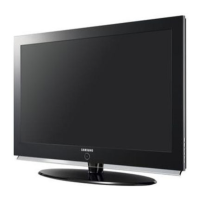


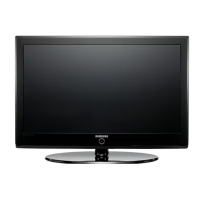
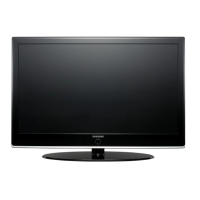
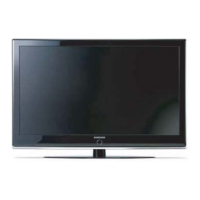
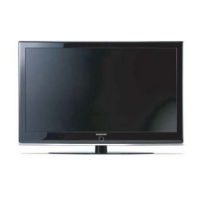
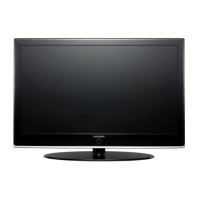
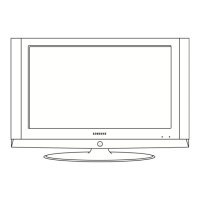
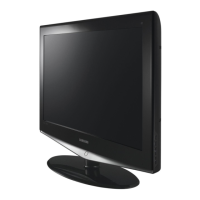
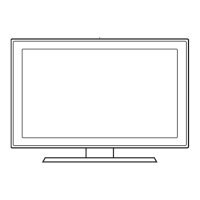
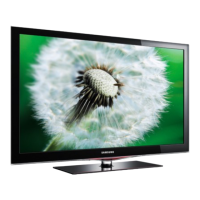
